
EUROPEAN JOURNAL OF NUCLEAR MEDICINE AND MOLECULAR IMAGING
Scope & Guideline
Shaping the Future of Diagnostic Imaging
Introduction
Aims and Scopes
- Theranostics in Cancer Treatment:
The journal emphasizes the integration of diagnostics and therapeutics, particularly in oncology, highlighting studies on radioligand therapy and personalized treatment strategies for various cancers. - Advancements in Molecular Imaging Techniques:
It covers innovative imaging methods, including PET, SPECT, and hybrid imaging modalities, showcasing the latest technological advancements and their clinical implications. - Radiopharmaceutical Development and Application:
The journal includes research on the synthesis, characterization, and clinical application of new radiopharmaceuticals, focusing on their efficacy and safety in diagnostics and therapy. - Clinical Applications and Guidelines:
It provides insights into clinical practices, including guidelines for the use of imaging in various medical conditions, and explores the role of molecular imaging in treatment decision-making. - Artificial Intelligence and Machine Learning in Imaging:
The journal discusses the integration of AI and machine learning in enhancing imaging analysis, improving diagnostic accuracy, and optimizing treatment planning.
Trending and Emerging
- AI and Deep Learning in Imaging:
The integration of artificial intelligence and deep learning techniques is increasingly prevalent in imaging analysis, enhancing diagnostic accuracy and workflow efficiency. - Personalized Medicine and Dosimetry:
There is a rising focus on personalized dosimetry approaches, which optimize treatment based on individual patient characteristics and tumor biology, particularly in radioligand therapy. - Innovative Radiopharmaceuticals:
Research on novel radiopharmaceuticals, especially those targeting specific biomarkers in tumors, is gaining momentum, highlighting advancements in theranostics. - Total-body Imaging Technology:
The development and application of total-body PET imaging technology are emerging as a significant trend, with studies exploring its advantages in various clinical scenarios. - Patient-Centric Approaches in Nuclear Medicine:
An increasing number of studies are focusing on patient experience and outcomes, emphasizing the importance of integrating patient perspectives in nuclear medicine practice.
Declining or Waning
- Traditional Imaging Techniques:
There has been a noticeable decrease in studies focused solely on conventional imaging techniques, such as planar scintigraphy, as newer hybrid and molecular imaging methods gain prominence. - Basic Science Research in Radiopharmaceuticals:
Research articles centered on basic science aspects of radiopharmaceuticals, such as preclinical studies without direct clinical application, have seen reduced publication frequency in favor of more clinically oriented studies. - Non-targeted Radiopharmaceutical Applications:
The journal has published fewer articles related to the non-targeted applications of radiopharmaceuticals, indicating a shift towards targeted therapies and precision medicine.
Similar Journals
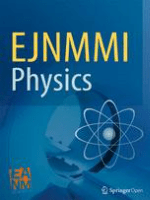
EJNMMI Physics
Elevating Knowledge in Medical Physics and Imaging Technologies.EJNMMI Physics, the premier journal for advancements in nuclear medicine and imaging, is published by Springer in Switzerland and has been an open-access outlet since 2014, allowing for broad dissemination of critical research findings. With an ISSN of 2197-7364, the journal aims to bridge the gap between state-of-the-art physics and practical applications in biomedical engineering and radiology. Its impressive Q1 ranking in multiple categories, including Biomedical Engineering, Instrumentation, Radiation, and Radiology, Nuclear Medicine and Imaging, exemplifies its significant impact in the field. The journal boasts exceptional metrics with Scopus rankings placing it in the top echelons across disciplines, including a 6th position out of 58 in Radiation, and serves as an essential resource for researchers, professionals, and students who are eager to contribute to and stay informed about cutting-edge scientific advancements. With a broadening scope until 2024, EJNMMI Physics is an indispensable tool for those dedicated to pushing the boundaries of knowledge in medical physics and imaging technologies.
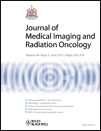
Journal of Medical Imaging and Radiation Oncology
Innovating Imaging Techniques for a Healthier TomorrowJournal of Medical Imaging and Radiation Oncology, published by WILEY, is a pivotal resource in the fields of oncology and medical imaging. With an impact factor reflective of its commitment to advancing research, the journal has maintained a robust reputation since its inception in 2008 and continues to thrive through 2024. It is indexed with an insightful ranking, with a Q2 classification in Radiology, Nuclear Medicine and Imaging, affirming its importance in these disciplines. This journal not only serves as an open access platform, allowing extensive reach and accessibility, but also fosters a scholarly community dedicated to the innovation of imaging techniques and radiation oncology practices. As a key player in disseminating crucial findings and advancements, it appeals to researchers, clinicians, and students who aim to contribute to the evolving landscape of medical imaging and cancer treatment methodologies. The journal is based in Australia, at 111 River St, Hoboken, NJ, and invites submissions that push the boundaries of current knowledge in this critical area of healthcare.

PET Clinics
Illuminating the Path of Medical Imaging Advancements.PET Clinics, published by Elsevier Inc, is a premier academic journal focusing on the advancements and applications of Positron Emission Tomography (PET) in various medical fields. With its ISSN 1556-8598 and E-ISSN 1559-7814, the journal has established a strong reputation in the scientific community, reflected in its impressive Q1 quartile rankings in Medicine (miscellaneous), Radiation, and Radiology, Nuclear Medicine, and Imaging for 2023. The journal operates within a well-defined scope that bridges innovative research and practical clinical applications, targeting professionals, researchers, and students keen on the intersection of nuclear medicine and imaging technologies. Although not an open-access journal, PET Clinics ensures accessibility through institutional subscriptions, making valuable insights available to the academic community. With an emphasis on enhancing patient care and treatment outcomes through cutting-edge imaging techniques, this journal serves as an essential resource for those seeking to expand their knowledge and expertise in the rapidly evolving field of PET.

Iranian Journal of Radiology
Connecting Researchers for a Brighter Imaging FutureWelcome to the Iranian Journal of Radiology, a pivotal platform dedicated to advancing the field of radiology, nuclear medicine, and medical imaging. Published by BRIEFLAND, this journal aims to disseminate high-quality original research, reviews, and clinical studies that contribute substantially to the global scientific community. Established in 2008 and spanning until 2024, the journal provides an essential archive of knowledge in a rapidly evolving discipline. Although it currently holds a Q4 quartile ranking in the 2023 Scopus metrics, it serves as an important resource for both emerging and established researchers looking to submit their work. Located in the Netherlands, the journal is committed to open dialogue and collaboration amongst professionals in the field, reflecting its accessibility and relevance to both practitioners and academics. With its continued growth and commitment to quality, the Iranian Journal of Radiology is poised to enhance understanding and innovation in diagnostic imaging.

EUROPEAN JOURNAL OF RADIOLOGY
Innovating Radiology for a Healthier FutureThe European Journal of Radiology, published by Elsevier Ireland Ltd, is a premier peer-reviewed journal in the fields of radiology, nuclear medicine, and imaging. Established in 1981, it has carved a significant niche within the academic community, showcasing innovative research that enhances medical imaging practices and improves patient care. With an impressive ranking in the Q1 category for both Medicine (miscellaneous) and Radiology, Nuclear Medicine, and Imaging in 2023, the journal is recognized globally for its commitment to advancing scientific knowledge and improving imaging methodologies. The journal's Scopus ranking of #60/333, placing it in the 82nd percentile, underlines its reputation for high-quality research and scholarly contributions. While traditionally a subscription-based journal, it continually evolves to meet the demands of the academic landscape, aiming to bridge the gap between research and clinical practice. Researchers, healthcare professionals, and students alike can benefit from exploring its extensive archives and current publications, which are curated to foster education and innovation in the medical imaging domain.
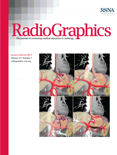
RADIOGRAPHICS
Pioneering Insights in Nuclear Medicine and ImagingRADIOGRAPHICS, published by the Radiological Society of North America (RSNA), is a premier academic journal dedicated to the field of radiology, nuclear medicine, and imaging. With an impressive impact factor and recognition in the top quartile (Q1) of both Medicine (miscellaneous) and Radiology, Nuclear Medicine and Imaging categories, RADIOGRAPHICS stands out as a leading platform for disseminating high-quality research and clinical findings. Since its inception in 1985 and projected to run until 2024, the journal has consistently provided essential insights into cutting-edge imaging techniques and advancements in radiological practices, making it invaluable for professionals, researchers, and students alike. Although it does not offer open access, the journal continues to flourish with a robust reputation, ranked 35th in its field according to Scopus, placing it within the 89th percentile of its category. With an unwavering commitment to enhancing the understanding and application of radiological sciences, RADIOGRAPHICS remains a pivotal resource for advancing knowledge and expertise within the medical community.
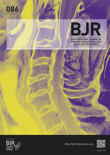
BRITISH JOURNAL OF RADIOLOGY
Advancing Radiology Through Innovation and ExcellenceBritish Journal of Radiology is a leading peer-reviewed journal published by the British Institute of Radiology, dedicated to advancing the field of radiology, nuclear medicine, and imaging. With a prestigious history dating back to 1945, this journal is at the forefront of disseminating cutting-edge research and innovations that significantly impact clinical practice. Currently enjoying a Q1 ranking in the field of radiology and Q2 in general medicine for 2023, it is recognized for its rigorous standards and high-quality content, ranking #87 out of 333 in Scopus for specialties related to Medicine, Radiology, Nuclear Medicine, and Imaging, placing it in the 74th percentile. Researchers, professionals, and students are encouraged to engage with the latest findings and comprehensive reviews presented within its pages, which contribute not only to academic discourse but also to the evolution of practice in the wider medical community.
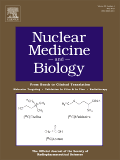
NUCLEAR MEDICINE AND BIOLOGY
Fostering excellence in nuclear medicine and molecular biology.NUCLEAR MEDICINE AND BIOLOGY, published by Elsevier Science Inc, is a premier journal dedicated to advancing the fields of nuclear medicine and molecular biology. Since its inception in 1986, this journal has served as a vital platform for the dissemination of high-quality research, with a clear focus on the innovative applications of nuclear techniques in biological settings. It is categorized in the Q3 tier for both Cancer Research and Molecular Medicine, and Q2 for Radiology, Nuclear Medicine and Imaging, highlighting its significant standing within these disciplines. The journal's Scopus rankings reflect its strong impact, placing it in the top quartile of its categories, particularly in Radiology, Nuclear Medicine, and Imaging. Researchers, professionals, and students alike will find this an invaluable resource for contemporary research findings and methodologies in nuclear medicine and its biological applications. Access to the journal is provided through subscription, ensuring that quality content remains available to its wide-ranging audience.
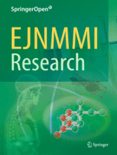
EJNMMI Research
Connecting Theory with Practice in Cutting-Edge Research.EJNMMI Research, a prominent journal published by Springer, plays a pivotal role in advancing the fields of radiology, nuclear medicine, and imaging. With an impact factor that reflects its strong standing—ranking in the top 22% of its category (Q1 as of 2023)—this open-access journal offers researchers, professionals, and students unparalleled access to innovative research and developments in the field since its inception in 2011. Based in Germany, EJNMMI Research fosters global collaboration by ensuring that cutting-edge findings are freely accessible, thereby accelerating scientific discovery and application. With an emphasis on high-quality, peer-reviewed articles, it serves as an essential resource for those seeking to stay at the forefront of nuclear medicine and imaging. By bridging theoretical insights with practical applications, the journal not only influences academic discourse but also supports ongoing advancements in clinical practices.

Nuclear Medicine and Molecular Imaging
Bridging Science and Practice for Enhanced HealthcareNuclear Medicine and Molecular Imaging, published by SPRINGER HEIDELBERG, stands as a pivotal platform in the interdisciplinary field of radiology and nuclear medicine, focusing on innovative research and developments from 2010 to 2024. With its ISSN 1869-3474 and E-ISSN 1869-3482, this journal aims to disseminate advanced studies that explore the diagnostic and therapeutic applications of nuclear medicine technologies. Operating from Germany, it has positioned itself in the Q3 category within the Radiology, Nuclear Medicine and Imaging sector, showcasing its relevance among peer journals, with a Scopus rank of #204 out of 333. This journal not only serves as an essential resource for researchers and practitioners eager to stay abreast of modern methodologies and findings but also underscores the crucial advancements in molecular imaging techniques. Although currently not an open-access journal, it doesn't detract from its mission to promote knowledge exchange among academia and the medical community, thus paving the way for innovative solutions and improved patient care in nuclear medicine.